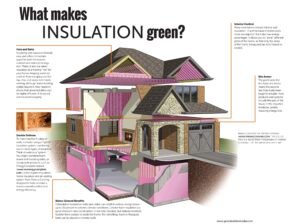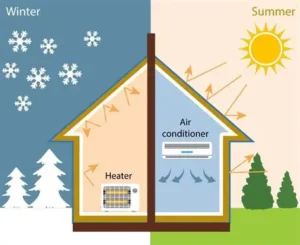General Questions
1.What is the purpose of insulation?Insulation helps regulate temperature in your home by reducing heat transfer. It keeps warm air inside during the winter and prevents heat from entering during summer, leading to improved energy efficiency and comfort.
2.What are the different types of insulation available?
The main types of insulation include:
Blown-In Insulation:
Loose material, usually fiberglass or cellulose, that is blown into spaces.
Batt Insulation: Pre-cut panels typically made from fiberglass or mineral wool.
Spray Foam Insulation:
Expanding foam that fills gaps and provides excellent air sealing.
How do I know if my home needs insulation?
Signs your home may need insulation include drafts, uneven temperatures between rooms, high energy bills, or an attic that feels excessively hot or cold.
Attic Insulation:
1.What are the benefits of attic insulation?
Attic insulation improves energy efficiency, enhances comfort by maintaining consistent temperatures, reduces noise transmission, and can increase property value.
2.What types of attic insulation materials are available in Ontario?
Common attic insulation materials include:
Blown-In Insulation:
Loose material made from recycled paper or fiberglass, offering good thermal performance.
Fiberglass Batts: Affordable and widely available, ideal for easy installation.
Spray Foam Insulation: Provides superior air sealing and moisture control, ideal for hard-to-reach areas.
Mineral Wool (Rock Wool): Fire-resistant and effective for soundproofing, making it a great option for attics.
3.How much insulation do I need in my attic?
In Ontario, the recommended R-value for attic insulation is typically R-50 to R-60, depending on your specific location and building codes.
Batt Insulation:
1.What is batt insulation made of?
Batt insulation is typically made from fiberglass or mineral wool, designed to fit standard stud and joist spacing.
2.How is batt insulation installed?
Batt insulation comes in pre-cut panels that can be installed between wall studs, floor joists, and ceiling rafters. It can be a DIY project or handled by professionals.
3.Is batt insulation fire-resistant?
Many types of batt insulation are treated to be fire-resistant, adding an extra layer of safety to your home.
Spray Foam Insulation:
1.What are the benefits of spray foam insulation?
Spray foam provides superior air sealing, has a high R-value per inch, controls moisture, and is long-lasting without settling over time.
2.How is spray foam insulation applied?
Spray foam is applied using specialized equipment that mixes the components on-site. It expands rapidly, filling gaps and cracks in walls and ceilings.
3.Is spray foam insulation safe?
When installed properly, spray foam insulation is safe. However, it’s important to hire trained professionals to ensure correct application and ventilation during installation.
Air Sealing:

1.What is air sealing?
Air sealing involves identifying and sealing gaps, cracks, and leaks in your home to prevent air leakage, which enhances energy efficiency and comfort.
2.How can I identify air leaks in my home?
Common areas to check for air leaks include windows, doors, electrical outlets, and areas where different building materials meet. A simple test is to use a candle or incense stick to detect drafts.
Cleanup:
1.Why is attic cleanup important?
Regular attic cleanup improves safety by reducing fire hazards and pest infestations, enhances air quality by removing dust and debris, and allows for better inspection of insulation and ventilation systems.
2.How often should I clean my attic?
It’s recommended to clean your attic at least once a year or more frequently if you notice significant dust buildup or if your attic is used for storage.
Ventilation:
1.What is attic ventilation, and why is it important?
Attic ventilation allows for proper airflow, helping to control moisture and temperature. It prevents condensation and mold growth, prolongs the life of your roof, and enhances energy efficiency.
2.How can I improve ventilation in my attic?
Improving attic ventilation can be achieved by installing soffit vents, ridge vents, or gable vents. It’s important to ensure a balance between intake and exhaust vents for optimal airflow.
Conclusion
For a comprehensive evaluation of your home’s insulation and ventilation needs, click here for a free in-home assessment or call us directly at +1 (877) 748-7526 Let us help you create a more comfortable and energy-efficient home!#
